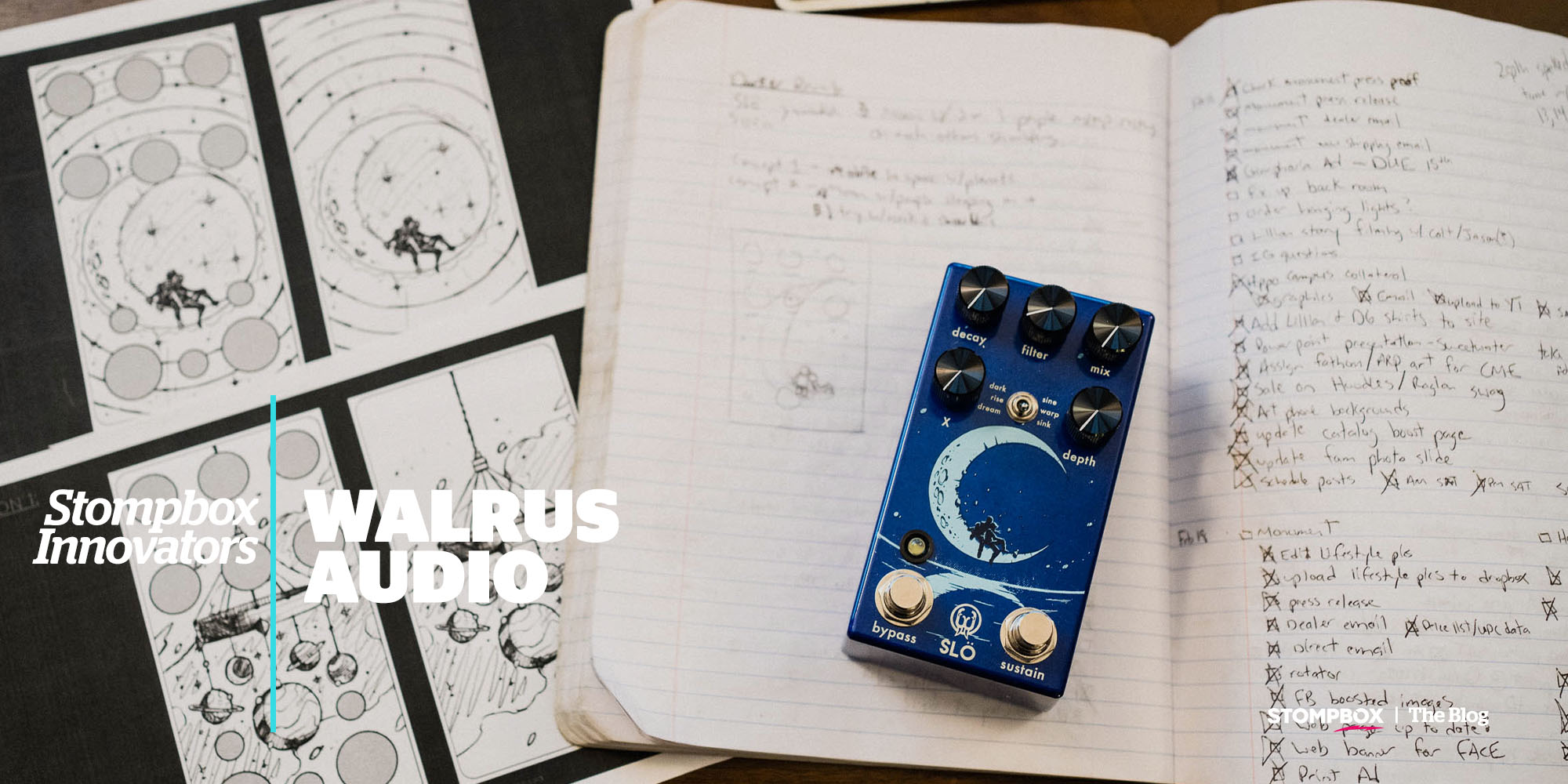Walrus Audio | Stompbox Innovators
Walrus Audio, based in Oklahoma City, does what Colt Westbrook—the company’s president—refers to as sound manipulation. “We wanted a name and a stoic story to go with each of these effects,” he says about how they name their pedals. “To add to the mystery that is sound manipulation, which is what we’re all doing.” The company isn’t averse to classic circuits, although they don’t do clones. Their pedals are unique designs, and many of their models—like the Julia Chorus/Vibrato and the Descent Reverb/Octave Machine—pair seemingly disparate elements in innovative ways. But don’t think every experiment is a best seller.
“It’s like baseball,” Westbrook says. “You play 100 games in the season and you’re really awesome if you only lose 50 of them.”
Westbrook gave us the lowdown about Walrus’ cool looking designs, why they stopped using batteries, the classic circuits he considers standard electric guitar sounds, and why ‘digital-vs-analog’ is the wrong way to phrase the debate.
How did you get into this, and was there a pedal or artist that put Walrus Audio on the map?
Walrus Audio started in 2011, and started with the Voyager Overdrive, Iron Horse Distortion, and Deep Six Compressor—products that are still in our lineup now. I personally came on to Walrus in 2014. They had a bit of momentum in 2014, so I quit my day job and jumped in full time to run the company. It’s been really great, really rewarding, but it doesn’t come without its scars. The artists that put us on the map are Ed O’Brien from Radiohead, Joe Bonamassa, and Nels Cline. They all bought into the Voyager pretty early on. Walrus Audio also started getting a lot of buzz after Premier Guitar gave one of their Premier Gear awards for the Voyager. We got more momentum with the Julia Analog Chorus/Vibrato—I think that started turning people’s heads towards Walrus after that.

What are some trends you’ve seen over the years, and have those impacted your designs?
I think it has and it hasn’t. The Julia Chorus and the Monument Harmonic Tap Tremolo are two of our most popular pedals, and those came from ignoring the market. The market wasn’t asking for chorus or a harmonic tremolo, but we were really inspired by a couple of albums that were coming out at the time, most specifically, Heigh Ho from Blake Mills—which has harmonic tremolo all over the album—and that really inspired the Monument. A lot of the inspiration for Walrus products comes from listening to music. I know the market has trends and things, and I wish there was a solid on-paper strategy. Maybe one day we’ll have one [laughs].
“That argument—digital vs analog—I think it’s the wrong argument. It really comes down to good designs vs bad designs. “
So it’s hit or miss?
We’ve had some misses for sure. There are a lot of products that we put out that we don’t make anymore, because we were selling like three a month. It was like, “That’s a lot of stock to keep around to build three a month.” The misses are a lot less visible, like the Vanguard Dual Phase, the Red High Gain Distortion, or the Contraband Fuzz—those products, some people miss them, because they’re not as visible. But in our defense, they’re still really awesome pedals. I still have them here in my office and I still play them, but the market for some reason didn’t latch on to them.
You don’t do clones?
No, we try to stay away from that. Our customers aren’t looking at us for that. Not that any of our overdrives don’t have signature foundations from some of those pedals, but there are other companies that are doing that really well. Some people want an affordable Klon clone or an affordable Tube Screamer made in the USA, or with higher quality components, and things like that. But people aren’t really looking at Walrus audio to provide them with those products.
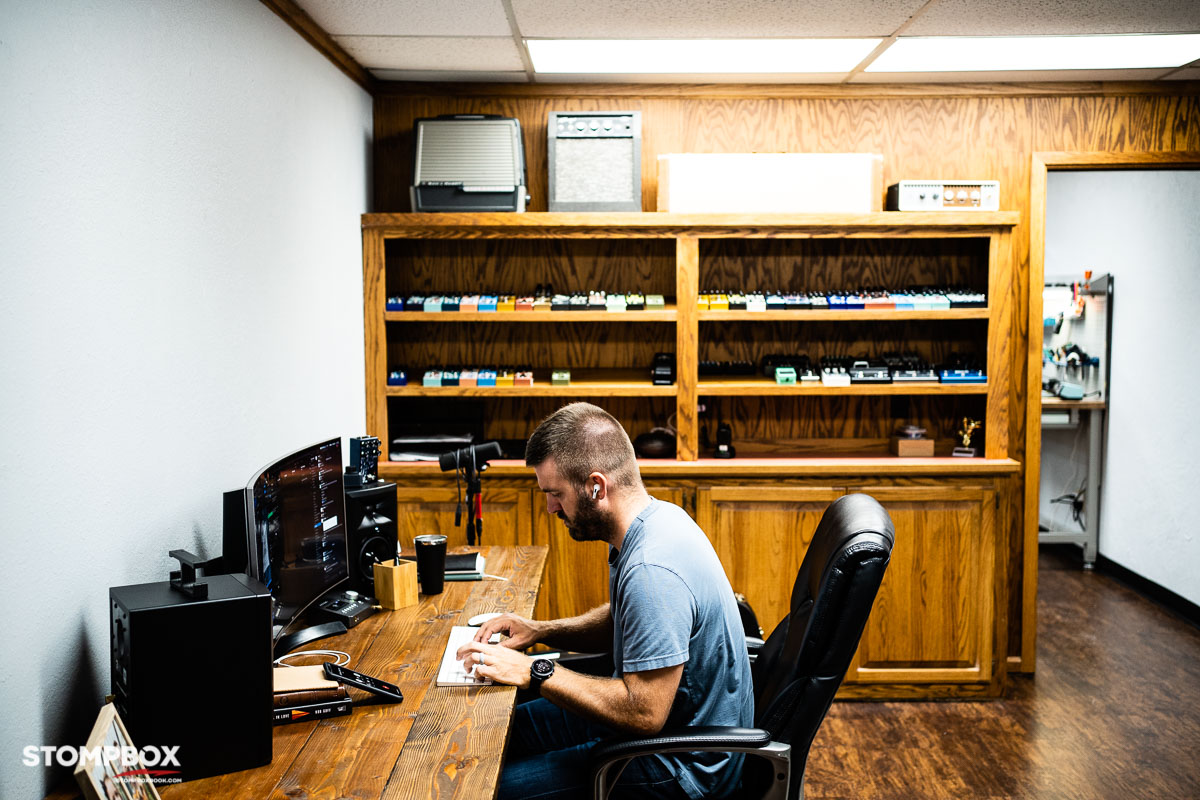
Have certain circuits dominated over years?
There are a lot timeless circuits that are always going to be around, like the Blues Breaker circuit, the Tube Screamer, and the Klon. They’re signature overdrive sounds and they are so cross-genre versatile—you hear them in heavy metal, you hear them in country music, you hear them on pop radio. To me, they are standard electric guitar tones. What those specific circuits do is allow the player’s signature sound shine and come out. That’s why I think a lot of people have gravitated toward those specific circuits, because they don’t coat the sound. The overdrive tone doesn’t take over as precedent tone, but allows the player to come through, which is why you can use those pedals in heavy metal or in hip hop or alt rock, because it comes down to how is the guy actually playing guitar. I think you’ll see those for many decades in music to come.
Bucket brigade, people love that sound. It’s very warm, and it sounds delightfully antiquated already. People love those kinds of sounds. I think stuff like that is going to be in-and-out, those designs are a little harder for people to pull off. They are a lot harder parts to source. It’s not impossible, but it’s not as easy as buying the kit for an overdrive.
What’s your take on digital vs analog? You’re not a purist.
No. That argument—digital vs analog—I think it’s the wrong argument. It really comes down to good designs vs bad designs. I’ve played some incredibly beautiful digital overdrives, like Strymon Sunset, Strymon Riverside—those are digital overdrives and they sound so good. Guys who are looking for perfect dynamics and things like that gravitate towards those types of digital overdrives. There are also good digital delays that are emulating analog sounds, and I think they do a really good job. On the other side, there are bad digital designs that are trying to emulate distortion, or bad digital delays out there—they just didn’t do a good job—and I think that’s why digital gets a lot of flack. But at the same time, I’ve played some crappy analog overdrive pedals. So I think it’s really good designs vs bad designs, and I don’t think there’s one way or another. When you’re listening to a record, it’s really hard to tell. That’s why we’re all in this game—it’s to make music. If the front of house guy can’t tell and you can’t really tell on a record—except in a couple of instances—then whatever works for your rig and your playing style, that’s what you got to do.
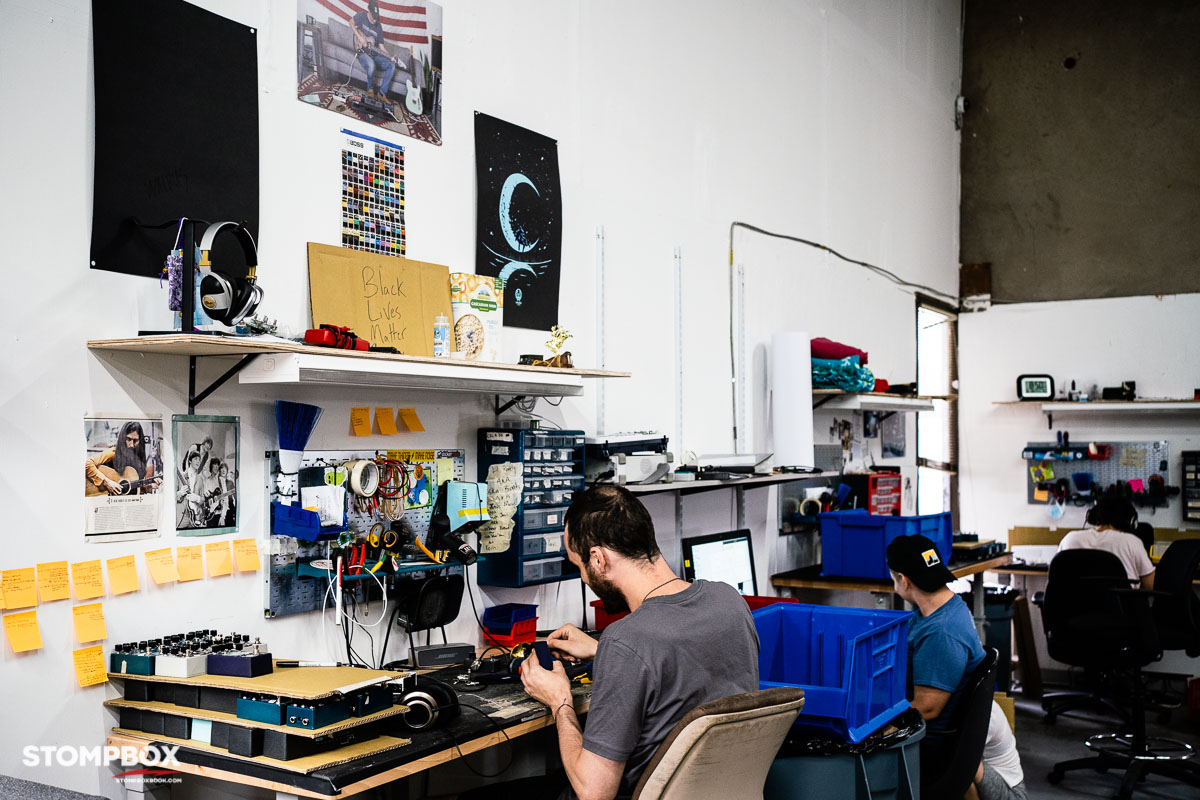
Have issues like latency been solved with digital?
I think it comes down to the same answer: there are bad designs where latency is an issue. The other thing is if you do buffered bypass poorly. A lot of time-based effects have to be buffered bypass if you want to have a spill effect—where the effect keeps going after you turn the effect off—if you want that feature, it’s mandatory that a lot of those things be buffered bypass and not true bypass. I think we’re doing a good job with buffered bypass, and there are a lot of other companies in our circle that are doing a good job, but at the same time, I’ve played some pedals that haven’t done a great job. You lose a lot of signal or you have latency issues. I think it comes down to good design vs bad design.
How about certain trends like smaller pedals and not using batteries: do you have opinions about that?
We don’t make pedals with battery snaps. The only pedal that still has a battery snap is the Janus Fuzz/Tremolo combination pedal. We took the battery snaps out, and we probably get two or three complaints a year. I think people understand the importance of isolated clean power and how that is an easy way to have consistent sounds no matter the venue. For us, in production, it saves us time. It also saves us a dollar not including the battery snap. We took it out and really haven’t gotten flack for it for the most part. It helps the player think about what power source they use, which I think is an important part of your tone.
Not using batteries is a tone issue, not an ecological issue?
Not tone, but a tone consistency issue. Your pedal is going to sound really similar one way or the other, but when you get into dirty power, buzz in your amp or pedals, picking up radio stations, and all that weird stuff—a lot of people send that stuff in because they think it’s the pedal, but a lot of the times it’s the power source. If we take that part out of the equation, it really helps out.
How about artwork: is artwork ornamental or should it indicate something to the user?
That was one of the things that we first started out with. The mission was that we wanted these things to look as good as they sound. In 2011, there wasn’t a lot of exciting screen printing on musical instruments and pedals, and things like that. We wanted to have a story burst out of each of these products. With the name, we weren’t just going to name stuff the FUZZ BOY 202 or the PHASE TORNADO—we wanted a name and a stoic story to go with each of these effects, to add to the mystery that is sound manipulation, which is what we’re all doing. In terms of the name, the art, the color choices, all those things—for each pedal, it works into the story of what we’re trying to portray with each effect.
More exclusive content from our interview with Colt Westbrook is featured in the Stompbox Book.
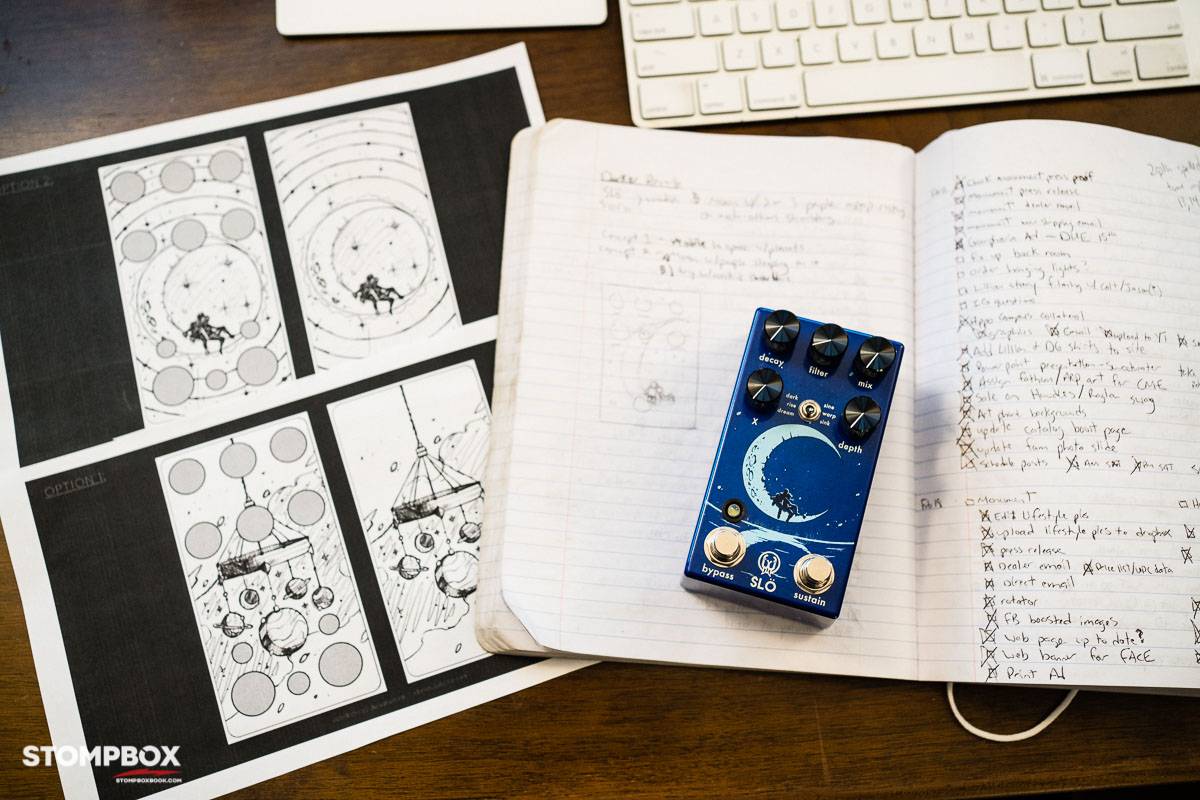

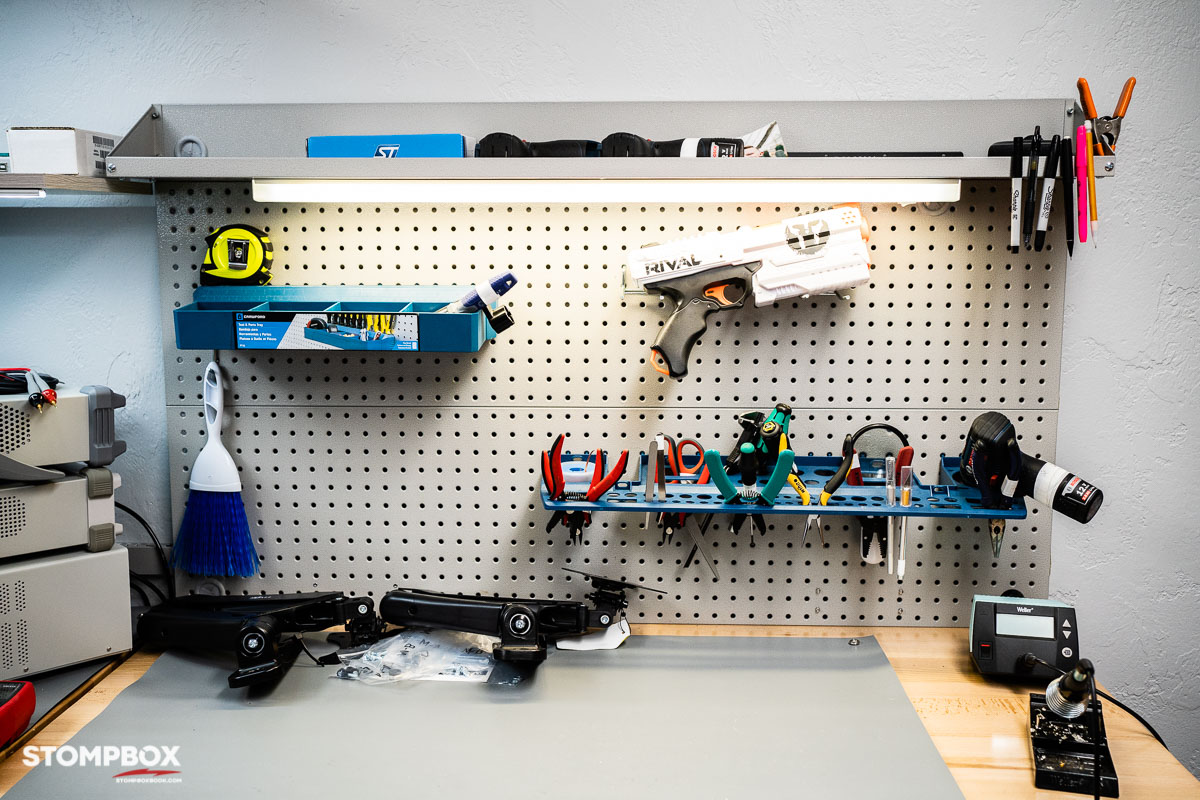
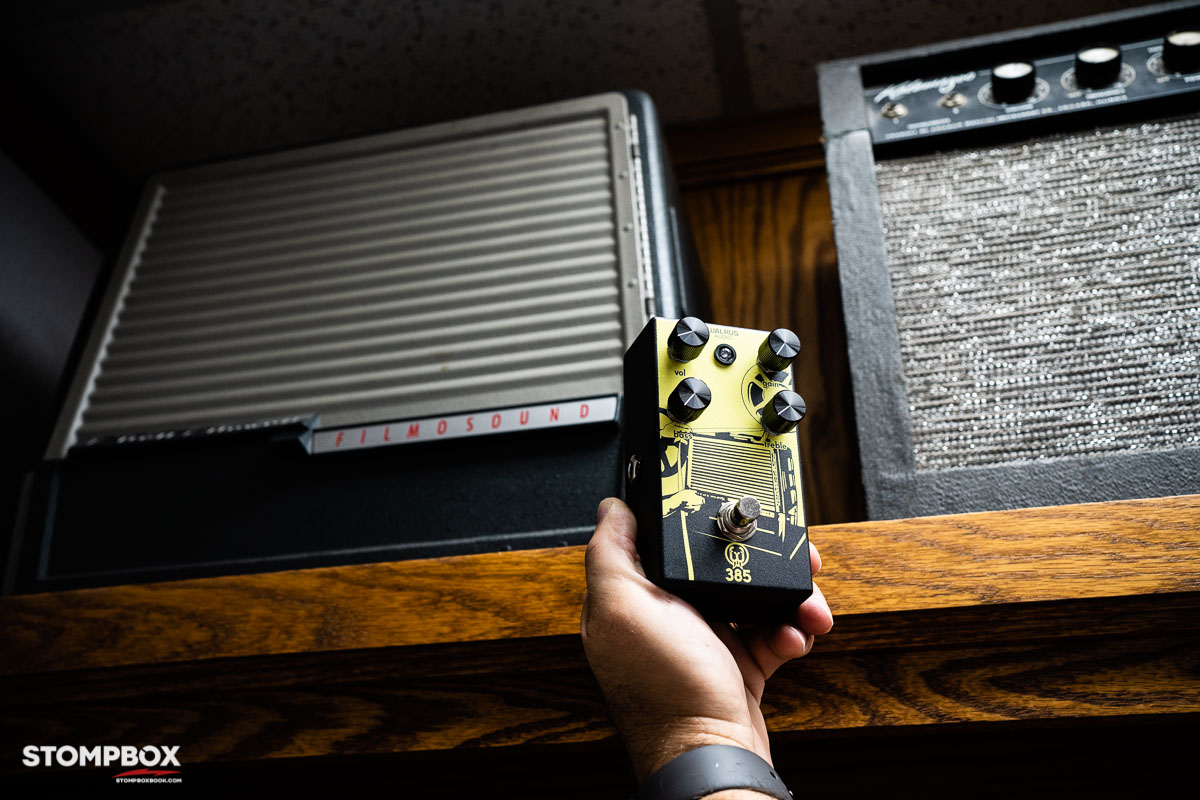
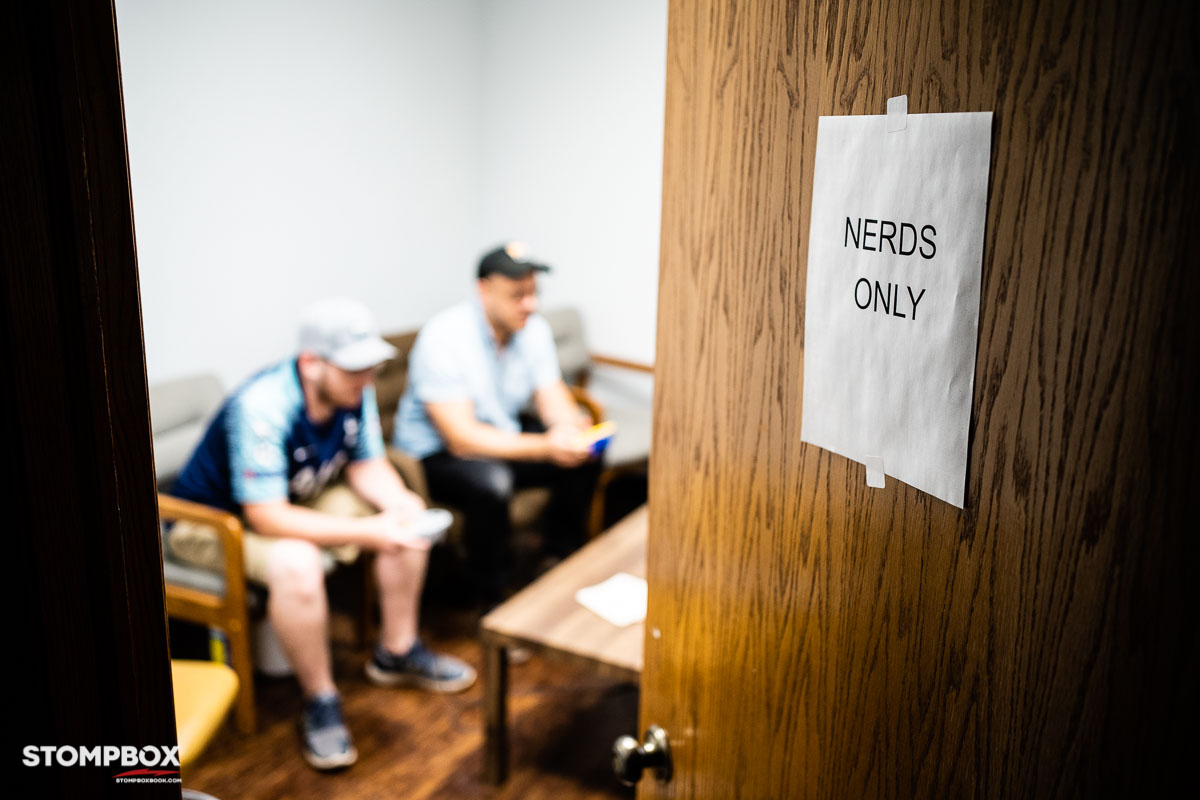

Get The Limited First Edition of Stompbox and Vintage & Rarities books here
